 I remember calling the announcer a “know-nothing boob” when he claimed Jerry Rice had “lost a step.” Those were fighting words, inferring the world’s greatest wide receiver from the world’s best-est NFL team was somehow mortal…
I remember calling the announcer a “know-nothing boob” when he claimed Jerry Rice had “lost a step.” Those were fighting words, inferring the world’s greatest wide receiver from the world’s best-est NFL team was somehow mortal…
Forgive my obvious “homer-ism” – there are other NFL franchises, but with the home team employing both Joe Montana and Jerry Rice the late 80’s and early 90’s were mostly a coronation rather than a contest.
Fly anglers are athletes only most of us don’t see it that way. Our contracts cover “love and cherish” and a lifetime of lawn mowing, and when the “head coach” tells us to come off the couch – we do so with all haste and don’t twitter our distaste for her play calling …
I’ve been wrestling with this notion all season, coming to grips with the fact that I’ve lost a step. It’s painful to admit and I’ve blamed all manner of external entities, but the plain truth is age is starting to show itself.
Mortality is a rude awakening, some find it early via cataclysmic event – but the rest of us feel like we’re in high school for forty years and then suddenly we’re not.
At 46 my lifelong 20-20 vision started to deteriorate. A visit to the ophthalmologist yielded a gleeful diagnosis of “old guy” Presbyopia, and nothing to be done about it. It meant reading glasses for fly tying, as I had trouble resolving small flies and hackles, and it meant glasses for knot tying while fishing – as I could no longer thread monofilament through the eye.
It meant that if the glasses were lost or broken, my fishing was done. The last 45 minutes of dusk – the Holy Time – when fish get careless and bugs grew dense – was now 35 minutes of swearing while trying to tie on the right fly, then finding I could no longer see it when it landed.
… and Shad meant healing between trips. All those broken fingers suffered in youth, and both thumbs broken while salt water fishing, have reawakened like some dormant volcano – reminding me of every youthful lapse in judgment.
The heavy rods with Ultra-fine, Half wells, Cigar, or Reverse half Wells, now are passed over in favor of the Full Wells grip, which seems to give better purchase and requires less finger pressure to keep the rod from rotating.
Throwing a Type VI head is always arduous. One or more roll casts to get it onto the surface, one or more false casts to position the running knot outside the guides, and then flung with great vigor.
Pop calls it “economy of motion” – where you start to favor a body part and refine the casting stroke to minimize repetition. I can still go all day, but this season taught me to use one roll cast, one positioning cast, and toss. Distance is unaffected, this is the cast you should have been using all along, the cast the rod’s taper was designed to deliver and only youthful ardor and invulnerability prevented you from learning it.
In addition to the reading glasses, we’ve added water and sugar. I’ve always been in good walking shape and trips start at the parking lot, with multiple miles of upstream or downstream before thinking of returning.
A couple liters of water and a snack bar have replaced the beer and a sandwich. Most of my local watershed is blazing hot and the refractive heat from sandy stretches coupled with the humidity of the creek can take the starch out of your stride long before the car is visible.
The forced march through the burning sands has been tempered by wisdom. We can still do the full frontal assault, but a spot of shade and some water makes it much more comfortable.
 We’ve added glasses, hydration, and a fart bar to the vest – three more items we can forget in the pre-dawn flurry of fly boxes, tippet and other essentials.
We’ve added glasses, hydration, and a fart bar to the vest – three more items we can forget in the pre-dawn flurry of fly boxes, tippet and other essentials.
But it’s the melancholy that makes “losing a step” so difficult. You know that another decade and you may not be fishing alone anymore, the decade after, fishing may be limited to the parking area, and in the decade that follows fishing may be a sunny park bench at the casting club – where you rub aching stuff and tell fish stories with other fellows in similar circumstance.
… all the while keeping a fatherly eye on the youthful know-nothings unable to keep a defined loop aloft, knowing your impatience with their casting stems from your inability to wade steadily, or rock-hop some small creek to show the lad how it’s really done.
You shake your head when he applies additional force to the cast which makes the tailing loop worse, and unable to suffer further you straighten off the bench to walk out to the fellow – enduring his glare of resentment when you offer to assist.
I suppose I was the same way when those old guys approached me. I knew everything already, despite only being 12.
I can dump a few extra pounds to regain a short burst of squandered youth, but a couple years later even that won’t be enough and I’ll submit reluctantly to the ravages of Time.
The silver lining has to be passing on all that knowledge – learned painfully at the cost of self – to some scowling young prick that will only learn its value a couple decades later when he faces what I faced.
Those that tie flies will blink through thickening spectacles and continue their craft with renewed passion, as it preserves the connection to the sport despite age or frailty.
… and pressing six or seven flies into the hands of some youngster – whose eyes grow as big as silver dollars may be a suitable surrogate for using them yourself.
I’m toying with going out messy like Brett Favre. I’ll be the bane of the orthopedic surgeon insisting he replace stiffened tendons with sheep embryo injections or stem cells.
Some innocent fellow will be tromping through the woods and stumble across my prone form at water’s edge, and when he checks for a pulse I’ll startle him by croaking out a string of obscenities, “get your goddamn hands off’n me you lummox, and tell me whether that big Brown is still there despite your big assed feet …”
That’s the Gold Lining, being a mean old SOB for the last couple of fortnights …
Tags: Old guys, fly fishing, lost a step, mortality, Brett Favre, Jerry Rice, Joe Montana, mean SOB, casting club, impatient youth, economy of motion, retired athlete, sheep embryo, hydration pack,


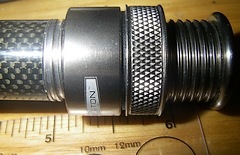 Fast action rods have the bulk of the flex contained in the top third or top half of the blank, but the RS4 is an extreme case typified by a club-like lower half. All rods should demonstrate some flex regardless of action type, and the RS4 was much too stiff in the lower two sections to see real deflection. As a result, it delivers the line with great authority, too much for delicate work – it’s bestial characteristic better suited for slamming deer hair bass bugs or waterlogged streamers into a stiff breeze.
Fast action rods have the bulk of the flex contained in the top third or top half of the blank, but the RS4 is an extreme case typified by a club-like lower half. All rods should demonstrate some flex regardless of action type, and the RS4 was much too stiff in the lower two sections to see real deflection. As a result, it delivers the line with great authority, too much for delicate work – it’s bestial characteristic better suited for slamming deer hair bass bugs or waterlogged streamers into a stiff breeze.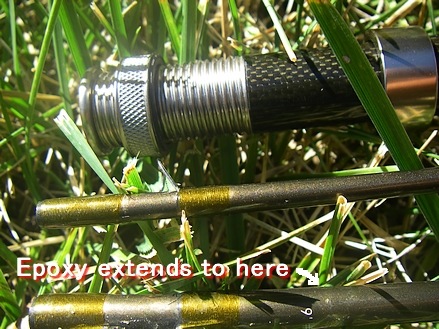
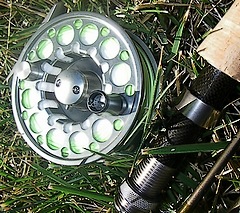
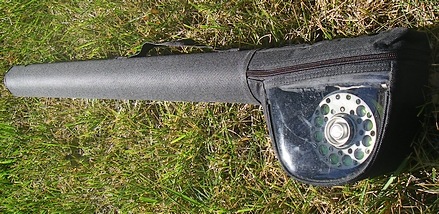
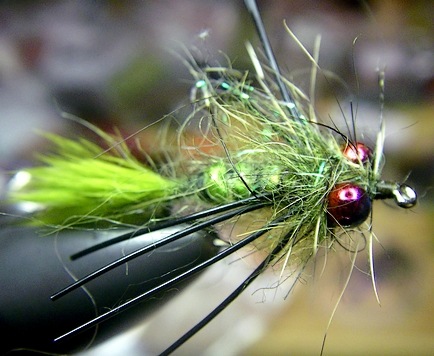
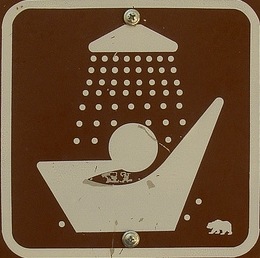 Once again I’m the center of attention as co-workers dance about me in utter horror.
Once again I’m the center of attention as co-workers dance about me in utter horror. I’ve always assumed it’s professional disdain – why the Fish and Game is reluctant to use anglers for eradication or thinning fish populations.
I’ve always assumed it’s professional disdain – why the Fish and Game is reluctant to use anglers for eradication or thinning fish populations.
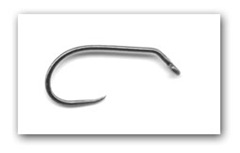 While the Clouser minnow allowed fly tiers to consider jig hooks for streamers, the Czech nymph crowd have introduced the Nymph Special, a bent shank nymph hook designed specifically for bead usage.
While the Clouser minnow allowed fly tiers to consider jig hooks for streamers, the Czech nymph crowd have introduced the Nymph Special, a bent shank nymph hook designed specifically for bead usage.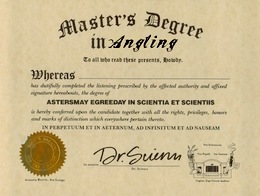 The credential is slowly winkling it’s way into our sport, and I have mixed emotions about the legitimacy that implies..
The credential is slowly winkling it’s way into our sport, and I have mixed emotions about the legitimacy that implies..
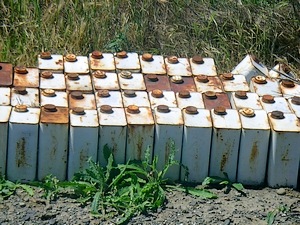 Africa and South America comprise the bulk of existing sales, but we’re just entering this new paradigm and have little idea how virulent the trend will become.
Africa and South America comprise the bulk of existing sales, but we’re just entering this new paradigm and have little idea how virulent the trend will become. It’s the same thing I tell new employees, ” if I forget your name and call you ‘New Meat’ – don’t take it personal, I have a helluva time remembering names, but once I catch you filching my favorite donut I’ll remember your name … just not in a good way.”
It’s the same thing I tell new employees, ” if I forget your name and call you ‘New Meat’ – don’t take it personal, I have a helluva time remembering names, but once I catch you filching my favorite donut I’ll remember your name … just not in a good way.”